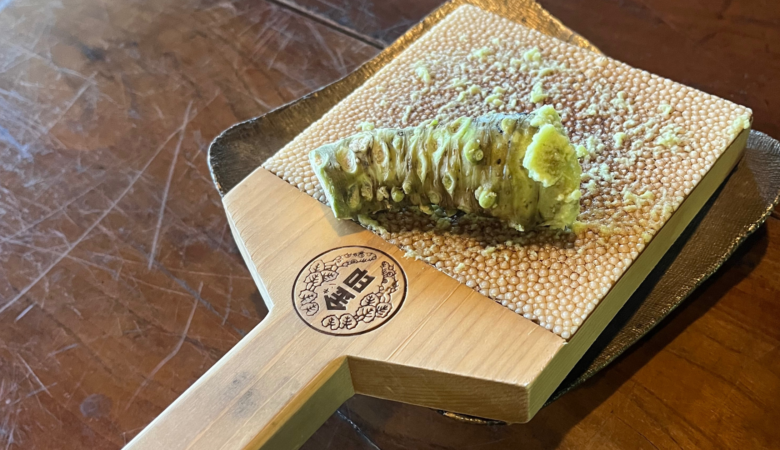When it comes to Japanese cuisine, or “Washoku,” one of the most exciting experiences for foreign tourists is indulging in the country’s exquisite food. Japan, home to the most Michelin-starred restaurants in the world, offers a culinary adventure like no other. In 2013, Washoku was recognized as a UNESCO Intangible Cultural Heritage, celebrated for its seasonal harmony, diverse and fresh ingredients, healthy eating habits, and deep social connections.

Among the many delights of Washoku—sashimi, sushi, tempura, beef, and wild vegetables—wasabi stands out as an essential spice that elevates these dishes to new heights. Known internationally as “Japanese Wasabi,” wasabi is a pesticide-free vegetable native to Japan. In 2018, the traditional cultivation of Shizuoka water wasabi was honored as a Globally Important Agricultural Heritage.

This time, I would like to introduce the history, benefit, production areas, and types of wasabis, which is native to Japan.
History of Wasabi
Wasabi, often called Japanese Wasabi or Hon-Wasabi, has a rich history dating back to ancient Japan. Initially used as a medicinal herb during the Nara period (710-794 AD), it gained recognition as a valuable spice by the Heian period (794-1185 AD). The cultivation of wasabi began in the early Edo period (1603-1868 AD) in Shizuoka Prefecture and was highly praised by Tokugawa Ieyasu, a prominent shogun.

Benefits of Wasabi
Wasabi is renowned for its sharp, pungent taste, making it a perfect condiment for sushi and sashimi. Beyond its flavor-enhancing properties, wasabi also boasts antibacterial benefits, making it a practical addition to raw fish dishes.


Production Areas
Today, wasabi is cultivated in several regions of Japan, including Nagano, Shizuoka, Shimane, and Okutama in Tokyo. Its cultivation requires clean, cold water and a specific climate, making it a challenging crop to grow. The Daio Wasabi Farm in Nagano Prefecture is a popular destination for visitors, while Shizuoka is known as the birthplace of wasabi cultivation and the second-largest producer after Nagano. Untouched nature of Wasabi fields in Izu in Shizuoka are terraced, creating a picturesque landscape.

Types of Wasabi
As of 2021, there are 21 registered varieties of wasabi, each with its unique flavor profile. From fresh spiciness to lingering heat, different varieties are chosen to complement dishes like sushi and soba noodle. The most famous variety is “Mazuma,” widely used in sushi and other traditional dishes.


Visit a Wasabi Field
For those intrigued by wasabi’s deep connection to Japanese cuisine, visiting a wasabi field is an exciting activity to better understand. It’s not only Daio Wasabi Farm, and also explore wasabi fields in Izu, Shizuoka, and Okutama in Tokyo. These visits offer a unique glimpse into the delicate cultivation process of this prized plant.

Embark on a culinary journey and discover the fascinating world of wasabi, a true gem of Japanese gastronomy!
Movie is here

